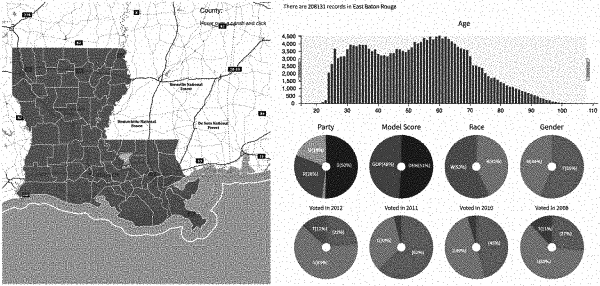| CPC G06N 5/02 (2013.01) [G06F 16/285 (2019.01); G07C 13/00 (2013.01)] | 20 Claims |

|
1. A computer-implemented method for generating a predictive model, the method comprising:
accessing data from a dynamic dataset and from a static dataset;
generating a unique individual profile for each of a plurality of subjects within a population, the unique individual profile being generated from the data in the dynamic and the static datasets;
assigning a class attribute to each of the plurality of subjects;
developing a classification model based on the unique individual profile and the class attribute for each of the plurality of subjects;
generating an individual score for each of the plurality of subjects using the classification model,
wherein the individual score lies within a range of [0, 1];
wherein the range further comprises a threshold, t, the threshold, t, defining a boundary between a first predicted outcome and a second predicted outcome;
wherein the first predicted outcome comprises [0, t] and the second predicted outcome comprises (t, 1];
identifying one or more undecided individual records that are explicitly identified as unaffiliated with both a first class and a second class;
calculating a median score among the one or more undecided individual records; and assigning the median score as the threshold, t; and
predicting an outcome of an event between the first predicted outcome and the second predicted outcome using the threshold, t, based on an aggregated count of the individual scores for the plurality of subjects.
|